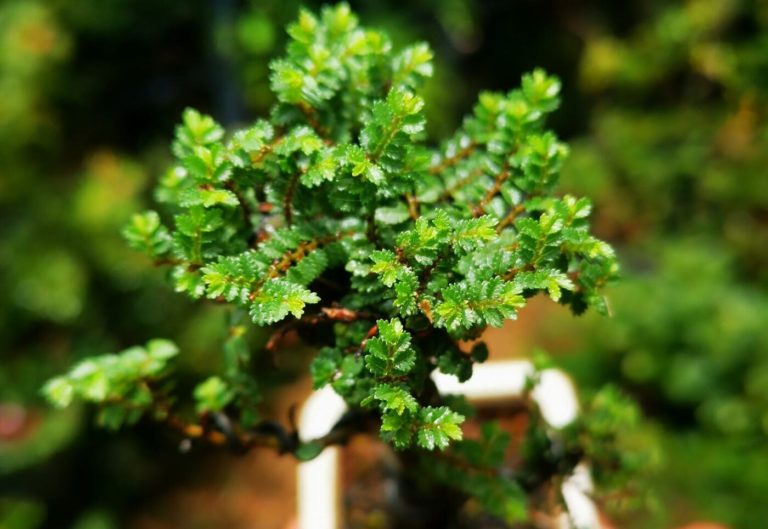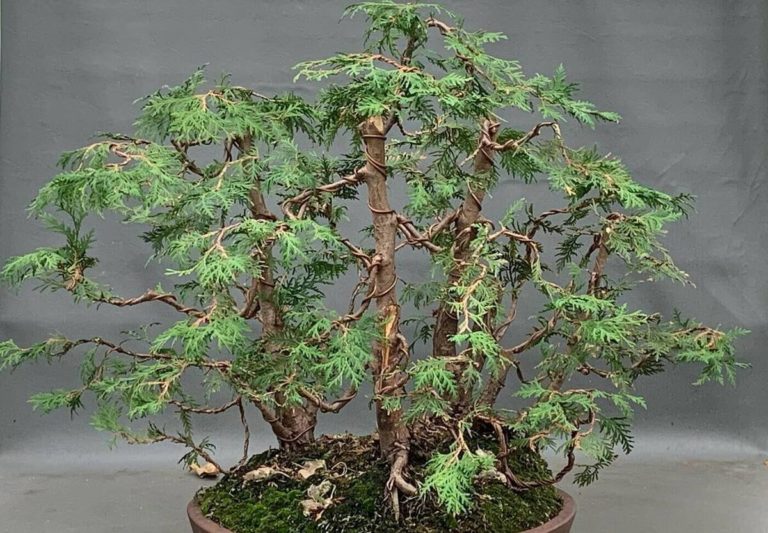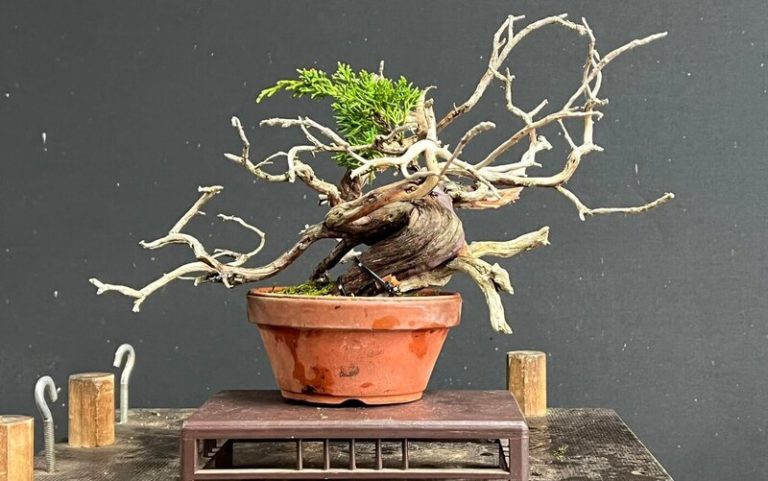Prayer Plant Bonsai: A Symbol of Mindfulness and Natural Harmony
Bonsai trees are popular for their miniature size and artistic appeal. One particular bonsai that stands out is the prayer plant bonsai, also known as Maranta leuconeura. In this article, we will explore the world of prayer plant bonsais and learn how to care for them.
What is a Plant Bonsai?
The Prayer Plant Bonsai, also known as Maranta leuconeura, is a specific variety of bonsai tree that belongs to the Maranta family. It is named after its unique characteristic of folding its leaves upward at night, resembling hands in prayer. This distinctive trait gives it its common name, the “prayer plant.”
History and Origins of Prayer Plant Bonsai
The Prayer Plant Bonsai, scientifically known as Maranta leuconeura, has an interesting history and origins. The plant itself, Maranta leuconeura, is native to the tropical regions of Central and South America, including areas like Brazil and Peru.
The term “Maranta” derives from Bartolomeo Maranta, an Italian physician and botanist who flourished in the sixteenth century. The plant genus Maranta was named after Maranta in recognition of his contributions to plant taxonomy and classification.
The cultivation and art of bonsai, on the other hand, originated in ancient China and later spread to Japan. Bonsai, meaning “tray planting,” involves growing and shaping miniature trees or plants in containers. It is a meticulous and artistic practice that aims to create natural-looking, miniature representations of full-sized trees.
The fusion of Maranta leuconeura and the art of bonsai gave rise to the Prayer Plant Bonsai. Bonsai enthusiasts recognized the unique characteristics of Maranta leuconeura, such as its attractive variegated foliage and the folding of its leaves, and began cultivating it as a bonsai tree.
The Prayer Plant Bonsai has acquired popularity among bonsai enthusiasts worldwide over time. Its distinctive foliage patterns and manageable scale make it a desirable candidate for bonsai culture. Today, it is admired for its elegance and the serenity it imparts to indoor spaces.
Over time, the Prayer Plant Bonsai has garnered worldwide popularity among bonsai enthusiasts. It is an attractive candidate for bonsai cultivation due to its distinctive leaf patterns and manageable size. Today, it is admired for its aesthetic value and the sense of serenity it imparts to interior spaces.
Prayer Plant Bonsai and Their Symbolism
Prayer Plant Bonsai, with their unique characteristics and symbolism, hold special meanings for those who cultivate and appreciate them. Here are some symbolic aspects associated with the Prayer Plant Bonsai:
1. Tranquility and Peace: The folding of the leaves in a prayer-like manner during the night represents a sense of calmness and serenity. It serves as a reminder to find inner peace and to approach life with a peaceful and balanced mindset.
2. Connection and Spirituality: The folded leaves of the supplication Plant Bonsai are frequently compared to hands in supplication, symbolizing a link to a higher power or spiritual domain. It functions as a visual reminder of the significance of connecting with one’s spiritual self through prayer or meditation.
3. Adaptability and Resilience: Prayer Plant Bonsai are known for their ability to adapt to changing light conditions and their resilience in various environments. This resilience can symbolize the importance of adaptability and the ability to overcome challenges in life.
4. Growth and Transformation: Bonsai, including Prayer Plant Bonsai, represent the art of shaping and guiding growth over time. As the bonsai tree matures and develops, it symbolizes personal growth, patience, and the transformative power of nurturing and caring for oneself.
5. Harmony with Nature: Bonsai, including Prayer Plant Bonsai, embody the harmony between humans and nature. The art of bonsai teaches us to respect and appreciate the beauty of the natural world, promoting a sense of connectedness and stewardship towards the environment.
6. Beauty and Aesthetics: The Prayer Plant Bonsai, with its variegated foliage and carefully crafted shape, represents the aesthetic beauty and appreciation of nature’s wonders. It serves as a reminder to find beauty in simplicity and to cultivate an eye for artistic expression.
These symbolic associations with Prayer Plant Bonsai add depth and significance to their cultivation and appreciation. They serve as reminders of the values and virtues we aspire to embody and as a source of inspiration and contemplation.
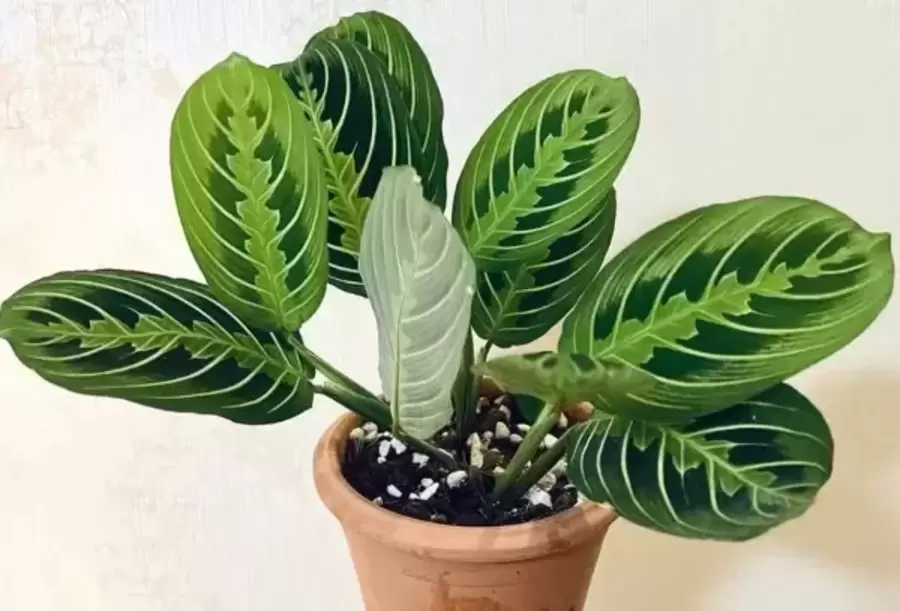
Characteristics of the Prayer Plant Bonsai
The Prayer Plant Bonsai, scientifically known as Maranta leuconeura, possesses several unique characteristics that make it a captivating and sought-after bonsai variety. Here are some notable characteristics of the Prayer Plant Bonsai:
- Foliage: The foliage of the Prayer Plant Bonsai is particularly striking and visually appealing. The leaves are typically broad, oval-shaped, and feature intricate patterns and variegation. The patterns often consist of contrasting shades of green, sometimes with hints of red, yellow, or purple, which adds to their overall beauty.
- Leaf Movement: One of the most intriguing characteristics of the Prayer Plant Bonsai is its leaf movement. The leaves fold upward in the evening, resembling hands in prayer, and unfold during the day. This unique behavior gives the plant its common name and adds a dynamic element to its overall appearance.
- Compact Size: The Prayer Plant Bonsai is naturally compact, making it an ideal choice for indoor bonsai cultivation. Its manageable size allows it to fit well on windowsills, shelves, or small spaces, adding a touch of greenery and natural beauty to any indoor environment.
- Low Light Tolerance: Prayer Plant Bonsai exhibits a good tolerance for low-light conditions. While it thrives in bright, indirect light, it can also adapt and maintain its growth in areas with lower light levels. This characteristic makes it suitable for indoor environments with limited natural light.
- Ease of Care: The Prayer Plant Bonsai is typically regarded as a reasonably simple bonsai species to maintain, particularly for novices. It has to be watered on a frequent basis to keep the soil wet but not waterlogged, and it thrives from greater humidity levels. It can also withstand a wide variety of temperatures in a normal domestic setting.
- Aesthetically Pleasing Form: When properly pruned and trained, the Prayer Plant Bonsai can develop a visually appealing form. With careful shaping and wiring techniques, the branches can be trained to create an elegant and balanced silhouette, enhancing the overall aesthetic appeal of the bonsai.
These distinctive characteristics of the Prayer Plant Bonsai make it an attractive choice for bonsai enthusiasts. Its captivating foliage, unique leaf movement, and manageable size contribute to its popularity, while its adaptability and ease of care make it suitable for a wide range of indoor settings.
Types of Prayer Plant Bonsai
When it comes to Prayer Plant Bonsai (Maranta leuconeura), there are different types and cultivars that enthusiasts can choose from. Here are some notable types of Prayer Plant Bonsai:
1. Maranta leuconeura ‘Erythroneura’: This variety is characterized by its striking red veins on the leaves, which contrast beautifully with the vibrant green background. The red veins create an eye-catching pattern and add an extra level of visual interest to the bonsai.
2. Maranta leuconeura ‘Kerchoveana’: Also known as the Rabbit’s Foot Prayer Plant, this cultivar has elongated leaves with intricate patterns of dark green spots and lighter green veins. The leaf shape and pattern resemble a rabbit’s foot, hence the common name.
3. Maranta leuconeura ‘Fascinator’: This cultivar has prominent, wide stripes of dark green and lighter green along the midrib of the leaves. The sharp contrast between the dark and bright hues provides an eye-catching and dramatic impact.
4. Maranta leuconeura ‘Kim’:‘Kim’ is a cultivar recognized for its distinctive and vivid leaf hues. The leaves are a vibrant mix of green, crimson, and yellow, providing a visually beautiful show. This cultivar gives a pop of color to any room.
5. Maranta leuconeura ‘Kerchoviana Variegata’: This cultivar stands out for its variegated foliage. The leaves have a mix of green and creamy white patches, adding an extra layer of visual interest and creating a more striking appearance.
These Prayer Plant Bonsai styles are only a small sample of what is out there. Bonsai aficionados can find a cultivar that best suits their aesthetic tastes by considering the cultivar’s leaf pattern, color, and other qualities.
How to Grow a Prayer Plant Bonsai
Growing a Prayer Plant Bonsai (Maranta leuconeura) requires attention to its specific needs. Here are some steps to help you grow a healthy and thriving Prayer Plant Bonsai:
- Select a Healthy Plant: Choose a healthy Prayer Plant from a reputable nursery or garden center. Look for vibrant foliage, without any signs of discoloration or damage. Ensure that the plant has a well-formed structure and no signs of pests or diseases.
- Potting and Soil: Select a suitable bonsai pot with good drainage holes. Use well-draining soil specifically formulated for bonsai or create a mix of equal parts peat moss, perlite, and coarse sand. Avoid heavy or compacted soils that retain excessive moisture.
- Light Conditions: Place your Prayer Plant Bonsai in a location with bright, indirect light. It thrives in bright areas but should be protected from direct sunlight, which can scorch the leaves. Consider placing it near a window with filtered light or using artificial grow lights if natural light is insufficient.
- Temperature and Humidity: Prayer Plant Bonsai prefers temperatures between 60-80°F (15-27°C). It appreciates moderate to high humidity levels. You can increase humidity by placing the bonsai pot on a tray filled with water and pebbles or using a humidifier nearby. Avoid placing the plant near drafts or in excessively dry environments.
- Watering: Keep the soil consistently moist but not soggy. Water the bonsai when the top inch of the soil feels slightly dry. Avoid overwatering, as it can lead to root rot. Regularly check the moisture level of the soil to determine the appropriate watering frequency.
- Fertilization: Feed your Prayer Plant Bonsai with a balanced liquid fertilizer specifically designed for houseplants or bonsai. Follow the manufacturer’s instructions for dosage and frequency. During the growing season (spring and summer), fertilize every two weeks, and reduce frequency during the dormant period (fall and winter).
- Pruning and Training: Regularly prune your Prayer Plant Bonsai to maintain its desired shape and size. Trim back any overgrown branches or yellowing leaves. Pinching off the growing tips can promote bushier growth. Training techniques, such as wiring, can be used to shape the branches and create an aesthetically pleasing form. Be gentle and patient when training to avoid damaging the plant.
- Pest Control: Look for common pests such as spider mites, aphids, and mealybugs. Inspect the leaves and stems on a regular basis for symptoms of infection. If pests are present, employ insecticidal sprays or natural pest management methods to treat them.
- Adjusting Care with Seasons: Prayer Plant Bonsai may have different care requirements during different seasons. During the warmer months, increase watering and fertilization. In winter, reduce watering and allow the plant to have a dormant period with lower light levels and cooler temperatures.
By following these guidelines and providing the necessary care, you can successfully grow a beautiful and thriving Prayer Plant Bonsai. Remember to observe your plant closely and adjust its care based on its specific needs and environmental conditions.
Benefits of Prayer Plant Bonsai
Prayer Plant Bonsai (Maranta leuconeura) offers several benefits, making it a popular choice among bonsai enthusiasts. Here are some key benefits of having a Prayer Plant Bonsai:
Aesthetically Pleasing: Prayer Plant Bonsai boasts beautiful and unique foliage patterns. The variegated leaves with intricate designs and vibrant colors add visual interest and create an attractive focal point in any indoor space. Its eye-catching appearance enhances the overall aesthetics of your home or office.
Compact Size: Prayer Plant Bonsai is naturally compact and doesn’t require significant space. It is an ideal choice for those with limited gardening areas or who live in apartments or small spaces. The bonsai’s manageable size allows you to enjoy the beauty of a tree without needing a large outdoor garden.
Indoor Décor: The Prayer Plant Bonsai brings a sense of nature and greenery into the home. Its presence may change a space, creating a sense of calm, relaxation, and connection with nature. The bonsai is a beautiful and live decorating element that matches a variety of interior design styles.
Air Purification: The Prayer Plant Bonsai contributes to indoor air purification, as do many houseplants. It improves air quality and creates a healthier living environment by removing contaminants and impurities from the air. The presence of bonsai has positive effects on both physical and mental health.
Stress Relief and Relaxation: Caring for a Prayer Plant Bonsai can be a therapeutic and calming experience. The process of tending to the bonsai, such as watering, pruning, and training, allows you to disconnect from daily stressors and focus on the present moment. The bonsai’s serene and graceful presence can help create a tranquil ambiance, promoting relaxation and reducing stress.
Mindfulness and Connection: Cultivating a Prayer Plant Bonsai encourages mindfulness and a deeper connection with nature. As you observe the plant’s growth and unique leaf movements, it reminds you to be present, appreciative, and connected with the natural world. The bonsai serves as a gentle reminder to find moments of stillness and reflection in your daily life.
Therapeutic Hobby: Growing and caring for bonsai, such as Prayer Plant Bonsai, can be a rewarding and engaging pastime. It allows you to develop your horticulture skills, exercise your fortitude, and express your creativity through shaping and training the bonsai. The process of cultivating a living art form can bring happiness, a feeling of accomplishment, and a deeper appreciation for nature.
These benefits of the Prayer Plant Bonsai make it an excellent choice for individuals seeking natural beauty, indoor greenery, and a mindful connection with nature within their living spaces.
Styling and Design of a Prayer Plant Bonsai
When it comes to styling and design, the Prayer Plant Bonsai (Maranta leuconeura) offers several possibilities to create an aesthetically pleasing and visually captivating bonsai. Here are some styling and design tips for your Prayer Plant Bonsai:
Formal Upright Style: The formal upright style is a classic and popular choice for bonsai, including the Prayer Plant Bonsai. In this style, the trunk grows straight and upright, gradually tapering towards the apex. Maintain a balanced structure by pruning branches to create an even distribution of foliage. This style highlights the elegance and symmetry of the plant.
Informal Upright Style: The informal upright style is more natural and relaxed in appearance. The trunk exhibits gentle curves and movement, giving the bonsai a sense of age and character. Allow the branches to grow in different directions, mimicking the organic growth patterns found in nature. This style creates a more dynamic and visually appealing bonsai.
Cascade Style: The cascade style involves allowing the trunk of the Prayer Plant Bonsai to cascade downwards, resembling a tree growing on a steep slope or cliff. This style creates a sense of drama and movement. Utilize wiring techniques to shape the trunk, ensuring it cascades gracefully. This style is well-suited for displaying the bonsai on elevated surfaces or in hanging baskets.
Multi-Trunk Style: The multi-trunk style is achieved by allowing multiple trunks to grow from the base of the Prayer Plant Bonsai. Each trunk should have its own distinct character and contribute to the overall composition. This style adds visual complexity and interest to the bonsai.
Broom Style: The broom style, also known as the “hokidachi” style, is characterized by a straight and upright trunk with a rounded canopy of foliage. Prune the branches to create a compact and rounded shape. This style is ideal for showcasing the attractive variegated foliage of the Prayer Plant Bonsai.
Forest Style: The forest style, also called “yose-ue,” involves planting multiple Prayer Plant Bonsai together to create the illusion of a miniature forest. Arrange the trees at different heights to create depth and perspective. This style is visually striking and can evoke a sense of tranquility and harmony.
When styling your Prayer Plant Bonsai, remember to regularly prune and shape the branches to maintain the desired form. Use bonsai wire to guide the branches into the desired position, being careful not to cause damage. Allow the natural characteristics and growth patterns of the Prayer Plant Bonsai to guide your styling decisions, while also expressing your creative vision.
Experiment with different styles and designs to find the one that resonates with you and enhances the beauty of your Prayer Plant Bonsai. Remember that bonsai styling is an ongoing process, and with time and careful attention, your bonsai will continue to evolve and mature into a unique and captivating living art form.
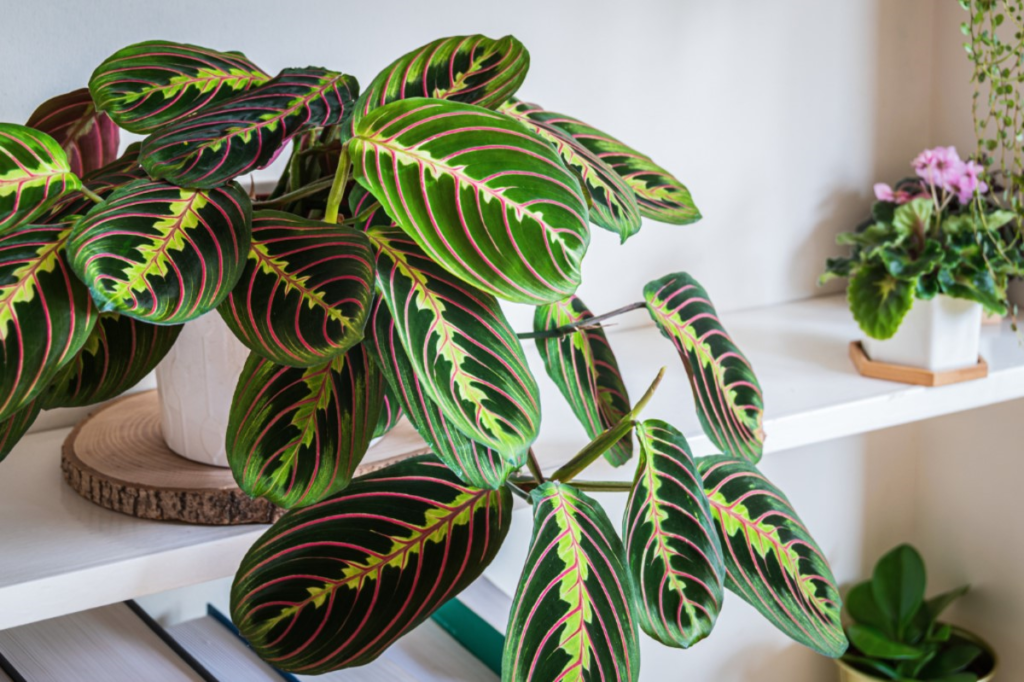
How to Care for and Maintain a Prayer Plant Bonsai
Caring for and maintaining a Prayer Plant Bonsai (Maranta leuconeura) involves providing it with the right conditions and attention to ensure its health and vitality. Here are some essential care tips for your Prayer Plant Bonsai:
- Light: Place your Prayer Plant Bonsai in a location with bright, indirect light. It thrives in well-lit areas but should be protected from direct sunlight, as it can scorch the leaves. Consider placing it near a window with filtered light or using artificial grow lights if natural light is insufficient.
- Temperature and Humidity: Prayer Plant Bonsai prefers temperatures between 60-80°F (15 and 27°C). Maintain a moderate to high humidity level, as it mimics the plant’s natural tropical habitat. You can increase humidity by misting the leaves regularly, placing a humidifier nearby, or using a pebble tray filled with water. Avoid placing the bonsai in drafty or excessively dry areas.
- Watering: Keep the soil consistently moist but not waterlogged. Check the moisture level regularly by touching the top inch of soil. Water the bonsai when it feels slightly dry. Avoid overwatering, as it can lead to root rot. Ensure proper drainage in the bonsai pot to prevent waterlogging.
- Soil: Use well-draining soil specifically formulated for bonsai or create a mixture of equal parts peat moss, perlite, and coarse sand. The soil should provide good aeration and drainage, allowing the roots to breathe and preventing waterlogging.
- Fertilization: Feed your Prayer Plant Bonsai with a balanced liquid fertilizer specifically designed for houseplants or bonsai. During the growing season (spring and summer), fertilize every two weeks to provide essential nutrients for healthy growth. Reduce the frequency of fertilization during the dormant period (fall and winter).
- Pruning: Regularly prune your Prayer Plant Bonsai to maintain its desired shape and size. Trim back any overgrown branches or yellowing leaves using sharp and sterile pruning tools. Pinch off the growing tips to encourage bushier growth. Pruning also helps to improve air circulation within the foliage, reducing the risk of pests and diseases.
- Pests and Diseases: Monitor your Prayer Plant Bonsai for common pests like spider mites, aphids, or mealybugs. Regularly inspect the leaves, stems, and soil for any signs of infestation or disease. If pests are present, treat them with appropriate insecticidal sprays or use natural pest control methods. Ensure good air circulation and avoid overwatering to prevent fungal diseases.
- Repotting: Repot your Prayer Plant Bonsai every 1-2 years to refresh the soil and provide more space for root growth. Repot during the spring when the plant is actively growing. Trim back any excess roots during repotting and use fresh bonsai soil.
- Seasonal Adjustments: Adjust your care routine based on the changing seasons. During the warmer months, increase watering and fertilization to support active growth. In winter, reduce watering and allow the plant to have a dormant period with lower light levels and cooler temperatures.
By following these care guidelines and observing your Prayer Plant Bonsai closely, you can ensure its well-being and enjoy its beauty for years to come. Remember to be patient, as bonsai care requires consistent attention and adjustments based on the specific needs of your plant.
Prayer Plant Bonsai Care sheet
| Aspect | Care Tips |
| Watering | Keep the soil consistently moist. Check the top inch of soil and water when it feels slightly dry. Avoid overwatering and waterlogging. |
| Sunlight | Place in bright, indirect light. Protect from direct sunlight to prevent leaf scorching. |
| Temperature | Maintain temperatures between 60-80°F (15-27°C). Avoid extreme temperature fluctuations. |
| Humidity | Maintain moderate to high humidity. Mist the leaves regularly, use a humidifier, or place on a pebble tray with water. |
| Fertilization | Feed with a balanced liquid fertilizer every two weeks during the growing season. Reduce frequency during the dormant period. |
| Pruning and Trimming | Regularly prune to maintain shape and size. Trim back overgrown branches and yellowing leaves. Pinch off growing tips for bushier growth. |
| Repotting | Repot every 1-2 years in fresh bonsai soil during the spring. Trim excess roots and provide more space for growth. |
| Pest and Disease Control | Monitor for pests like spider mites or mealybugs. Treat with appropriate insecticidal sprays or natural methods. |
| Winter Care | Reduce watering and allow for a dormant period. Provide lower light levels and cooler temperatures. |
| Regular Maintenance | Observe plant closely for any signs of distress, adjust care as needed, and provide regular maintenance to ensure health and vitality. |
Remember, these care tips are general guidelines, and it’s important to monitor your Prayer Plant Bonsai closely and adjust care based on its specific needs and environment.
Conclusion:
Cultivating a prayer plant bonsai is a rewarding experience. Remember to choose a healthy plant, provide the right conditions for growth, and care for it diligently. With proper pruning, training, and maintenance, your prayer plant bonsai will flourish and bring beauty to your surroundings. Enjoy the journey of bonsai cultivation and explore the wonders of the prayer plant bonsai!
FAQ:
Q: What is Prayer Plant Bonsai?
A: Prayer Plant Bonsai (Maranta leuconeura) is a small, ornamental tree that has been trained and styled as a bonsai. It features attractive, variegated leaves with unique patterns and vibrant colors.
Q: How is Prayer Plant Bonsai different from regular Prayer Plants?
A: Prayer Plant Bonsai is specifically cultivated and trained as a bonsai tree, while regular Prayer Plants are typically grown as houseplants without the bonsai training and shaping techniques.
Q: What is the symbolism of Prayer Plant Bonsai?
A: Prayer Plant Bonsai symbolizes mindfulness, spirituality, and connection with nature. Its unique leaf movements, folding upwards in the evening like hands in prayer, add to its symbolic significance.
Q: Can Prayer Plant Bonsai be grown indoors?
A: Yes, Prayer Plant Bonsai is well-suited for indoor cultivation. It thrives in bright, indirect light and appreciates moderate to high humidity levels.
Q: How often should I water my Prayer Plant Bonsai?
A: Prayer Plant Bonsai prefers consistently moist soil. Water it when the top inch of soil feels slightly dry, but avoid overwatering to prevent root rot.
Q: Does Prayer Plant Bonsai require direct sunlight?
A: No, direct sunlight can scorch the leaves of Prayer Plant Bonsai. It’s best to provide bright, indirect light or filtered sunlight.
Q: How often should I fertilize my Prayer Plant Bonsai?
A: During the growing season (spring and summer), fertilize your Prayer Plant Bonsai every two weeks using a balanced liquid fertilizer. Reduce frequency during the dormant period (fall and winter).
Q: How do I prune a Prayer Plant Bonsai?
A: Regular pruning is necessary to maintain the desired shape and size of your Prayer Plant Bonsai. Trim back overgrown branches and yellowing leaves and pinch off growing tips to encourage bushier growth.
Q: When should I repot my Prayer Plant Bonsai?
A: Repot your Prayer Plant Bonsai every 1-2 years during the spring. This allows for refreshing the soil and providing more space for root growth.
Q: How can I protect my Prayer Plant Bonsai from pests and diseases?
A: Regularly inspect your Prayer Plant Bonsai for pests like spider mites or mealybugs. Treat any infestations with appropriate insecticidal sprays or natural pest control methods. Ensure good air circulation and avoid overwatering to prevent fungal diseases.
Also Read:



